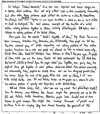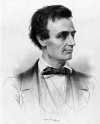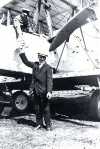 The SAT is a standardized test used in college admissions in the US. Developed by Carl Brigham, a Princeton psychologist who worked on the US Army’s IQ test, the first Scholastic Aptitude Test was administered in 1926 to over 8,000 test-takers—60% of whom were male. Criticized as being biased toward whites, males, and the middle class, the exam has been modified over the years to improve fairness. Still, its value as a predictor of success in college is debated. What does “SAT” stand for today?
The SAT is a standardized test used in college admissions in the US. Developed by Carl Brigham, a Princeton psychologist who worked on the US Army’s IQ test, the first Scholastic Aptitude Test was administered in 1926 to over 8,000 test-takers—60% of whom were male. Criticized as being biased toward whites, males, and the middle class, the exam has been modified over the years to improve fairness. Still, its value as a predictor of success in college is debated. What does “SAT” stand for today?
Source: The Free Dictionary
 Manufactured by Kodak from 1935 to 2009, Kodachrome was the first commercially successful color film and was used to capture some of the most iconic images of the late 20th century. The film was known for its stability—if stored properly, it could be developed decades after being exposed and would retain its color and density for decades. Yet, advances in digital photography and the development of competing films considerably reduced demand. What famous images were recorded on Kodachrome?
Manufactured by Kodak from 1935 to 2009, Kodachrome was the first commercially successful color film and was used to capture some of the most iconic images of the late 20th century. The film was known for its stability—if stored properly, it could be developed decades after being exposed and would retain its color and density for decades. Yet, advances in digital photography and the development of competing films considerably reduced demand. What famous images were recorded on Kodachrome?  With the exception of the attack on Pearl Harbor, the US was able to largely avoid fighting WWII on home soil, mainly because of its relative geographical isolation. However, Japan attacked the West Coast of the US several times. In 1942, a Japanese submarine fired at Fort Stevens in Oregon in the first and only attack on a mainland US military installation during the war. The shells damaged phone cables and a baseball backstop, but the fort’s gunners were ordered not to return fire. Why?
With the exception of the attack on Pearl Harbor, the US was able to largely avoid fighting WWII on home soil, mainly because of its relative geographical isolation. However, Japan attacked the West Coast of the US several times. In 1942, a Japanese submarine fired at Fort Stevens in Oregon in the first and only attack on a mainland US military installation during the war. The shells damaged phone cables and a baseball backstop, but the fort’s gunners were ordered not to return fire. Why?  Perhaps one of the most important battles of late antiquity, the Battle of Chalons is known only from written records and its exact location remains a mystery, though it probably took place in northeastern France. In this battle, the Romans and Visigoths stopped the advance of the Huns under Attila and, some say, preserved Western civilization. The battle was brutal, and legend holds that the ghosts of the dead continued to fight for days. By some accounts, the battle was fought over what woman?
Perhaps one of the most important battles of late antiquity, the Battle of Chalons is known only from written records and its exact location remains a mystery, though it probably took place in northeastern France. In this battle, the Romans and Visigoths stopped the advance of the Huns under Attila and, some say, preserved Western civilization. The battle was brutal, and legend holds that the ghosts of the dead continued to fight for days. By some accounts, the battle was fought over what woman?  When Garfield debuted in 1978, the comic strip appeared in just 41 newspapers. Today, Jim Davis’s strip about a lazy, sarcastic cat and his lonely owner, Jon Arbuckle, is syndicated in more than 2,500 papers with a readership of more than 200 million people. The feline who loves lasagna and hates Mondays has spawned books, movies, and merchandise, which are sold in more than 100 countries and earn nearly $1 billion each year. How have Internet artists altered the strip in unusual ways?
When Garfield debuted in 1978, the comic strip appeared in just 41 newspapers. Today, Jim Davis’s strip about a lazy, sarcastic cat and his lonely owner, Jon Arbuckle, is syndicated in more than 2,500 papers with a readership of more than 200 million people. The feline who loves lasagna and hates Mondays has spawned books, movies, and merchandise, which are sold in more than 100 countries and earn nearly $1 billion each year. How have Internet artists altered the strip in unusual ways?  Churchill delivered his celebrated “Finest Hour” speech after it became clear that France’s surrender to Germany was imminent and that this would bring the Nazi enemy to England’s doorstep. Churchill had been prime minister for just over a month when he delivered the 36-minute speech before the House of Commons. Warning that England would soon face attack, he tried to inspire courage, justify confidence in victory, and define the noble causes that Britain was fighting for, which were what?
Churchill delivered his celebrated “Finest Hour” speech after it became clear that France’s surrender to Germany was imminent and that this would bring the Nazi enemy to England’s doorstep. Churchill had been prime minister for just over a month when he delivered the 36-minute speech before the House of Commons. Warning that England would soon face attack, he tried to inspire courage, justify confidence in victory, and define the noble causes that Britain was fighting for, which were what?  Early in the American Revolution and soon after the battles of Lexington and Concord, colonial troops laid siege to Boston. When they began occupying hills overlooking the city, newly reinforced British troops attacked. After two failed assaults, a third charge dislodged the Americans, who had run out of gunpowder. Though the British technically won, their unexpectedly heavy casualties were a psychological blow, and American morale soared. On what hill was the battle actually fought—and why?
Early in the American Revolution and soon after the battles of Lexington and Concord, colonial troops laid siege to Boston. When they began occupying hills overlooking the city, newly reinforced British troops attacked. After two failed assaults, a third charge dislodged the Americans, who had run out of gunpowder. Though the British technically won, their unexpectedly heavy casualties were a psychological blow, and American morale soared. On what hill was the battle actually fought—and why?  In 1858, Lincoln was nominated to challenge incumbent Illinois senator Stephen Douglas for his seat. At the state Republican convention, he accepted the nomination with a now-famous speech explaining his view that the US could not exist with both slave and free states—as “a house divided against itself cannot stand.” He lost the race but won the presidency two years later. When and by whom had the same biblical reference previously been used to describe the national rift over slavery?
In 1858, Lincoln was nominated to challenge incumbent Illinois senator Stephen Douglas for his seat. At the state Republican convention, he accepted the nomination with a now-famous speech explaining his view that the US could not exist with both slave and free states—as “a house divided against itself cannot stand.” He lost the race but won the presidency two years later. When and by whom had the same biblical reference previously been used to describe the national rift over slavery?  Goodyear was the inventor of vulcanization, a process that makes rubber harder, less soluble, and more durable. Previously, rubber products were sticky and volatile, often melting in heat or hardening in cold. He obtained a patent for vulcanization in 1844 but was still badly in debt at the time of his death. Goodyear had no official connection to the famed Goodyear Tire Company, which was founded decades later and named in his honor. Why was he in prison when he began experimenting with rubber?
Goodyear was the inventor of vulcanization, a process that makes rubber harder, less soluble, and more durable. Previously, rubber products were sticky and volatile, often melting in heat or hardening in cold. He obtained a patent for vulcanization in 1844 but was still badly in debt at the time of his death. Goodyear had no official connection to the famed Goodyear Tire Company, which was founded decades later and named in his honor. Why was he in prison when he began experimenting with rubber?  In 1918, the Daily Mail newspaper renewed its £10,000 prize for the first nonstop flight across the Atlantic. The next year, British aviators John Alcock and Arthur Brown claimed it after completing a treacherous 16-hour flight from Newfoundland to Ireland. Along the way, Brown had to repeatedly climb onto the wings of their biplane to remove ice, and snow filled the open cockpit. Upon reaching Ireland, they attempted to land in what they thought was a field, but it turned out to be what?
In 1918, the Daily Mail newspaper renewed its £10,000 prize for the first nonstop flight across the Atlantic. The next year, British aviators John Alcock and Arthur Brown claimed it after completing a treacherous 16-hour flight from Newfoundland to Ireland. Along the way, Brown had to repeatedly climb onto the wings of their biplane to remove ice, and snow filled the open cockpit. Upon reaching Ireland, they attempted to land in what they thought was a field, but it turned out to be what?